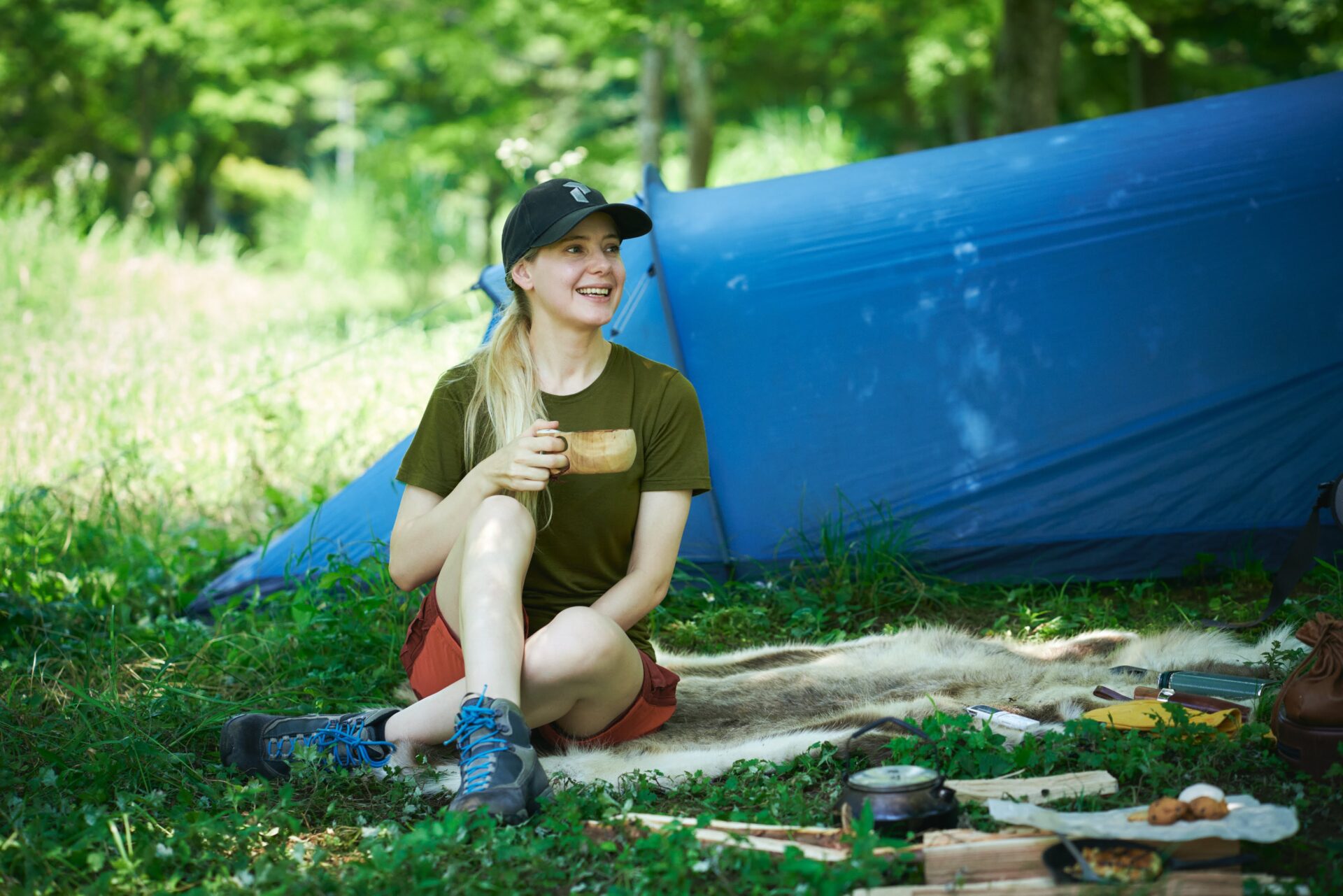“Fika” is a popular way people in Sweden enjoy a coffee break. Perhaps you have heard of the word before.
Generally, fika is a custom of enjoying coffee and sweets such as cinnamon rolls with friends, colleagues or family, but Janni smiles as she tells us, “Actually, there are no rules when it comes to fika.”

Fika has no rules. So what is the experience really like?
Janni Olsson is a Swedish columnist and model based in Japan. She has been sharing information about fika and other outdoor activities that she has enjoyed in her home country from a young age.
In early summer, we enjoyed a day outdoors with Janni to experience her style of outdoor fika and talked to her about the fika experience.
Fika eases the mind and brings people closer together
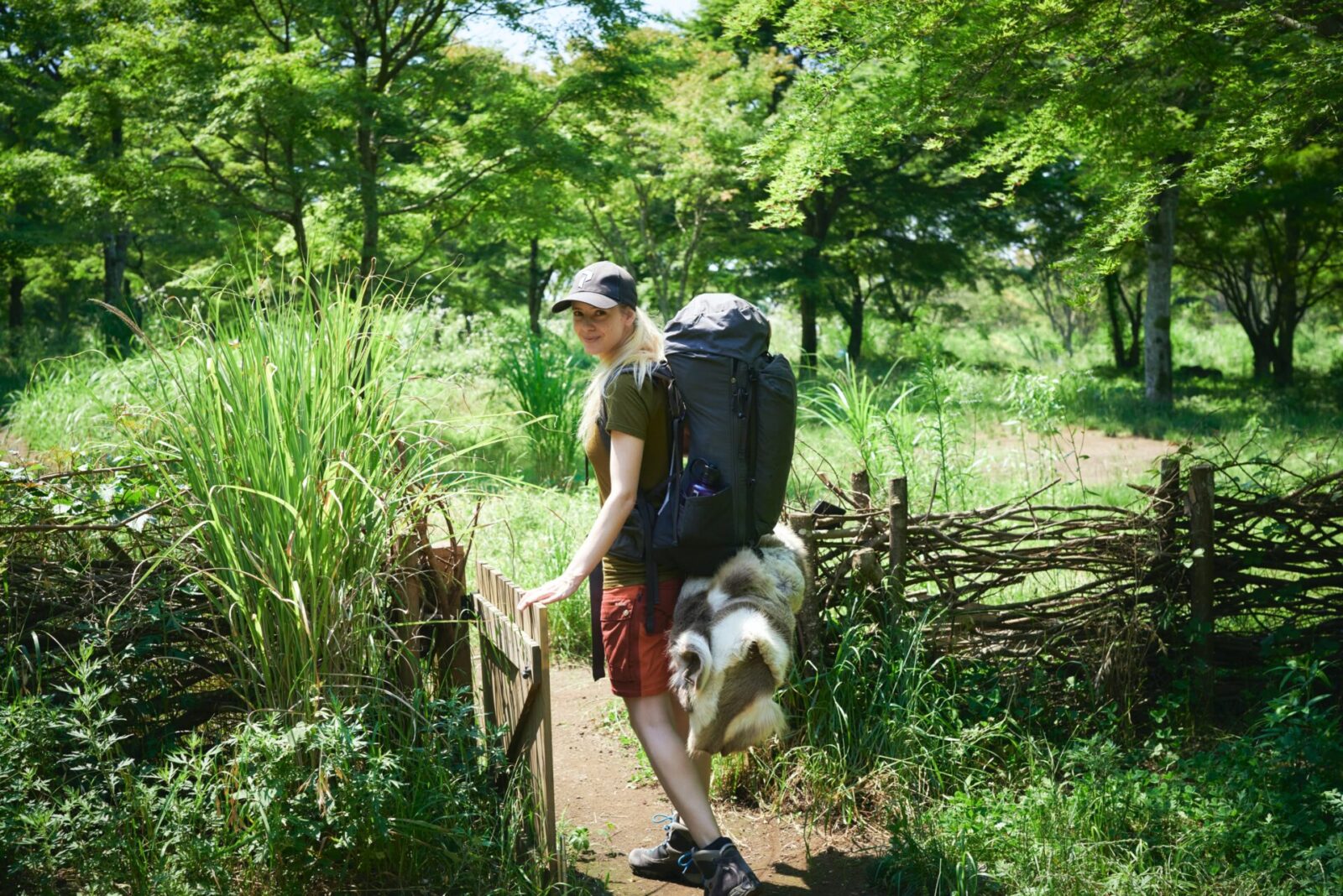
On a sunny early summer day, we visited a small campground in the woods of Shizuoka Prefecture with Janni.
“This looks like a good place to set up the tent.”
Janni dropped her large backpack under the cool shade of a tree and began setting up her tent quickly and efficiently.
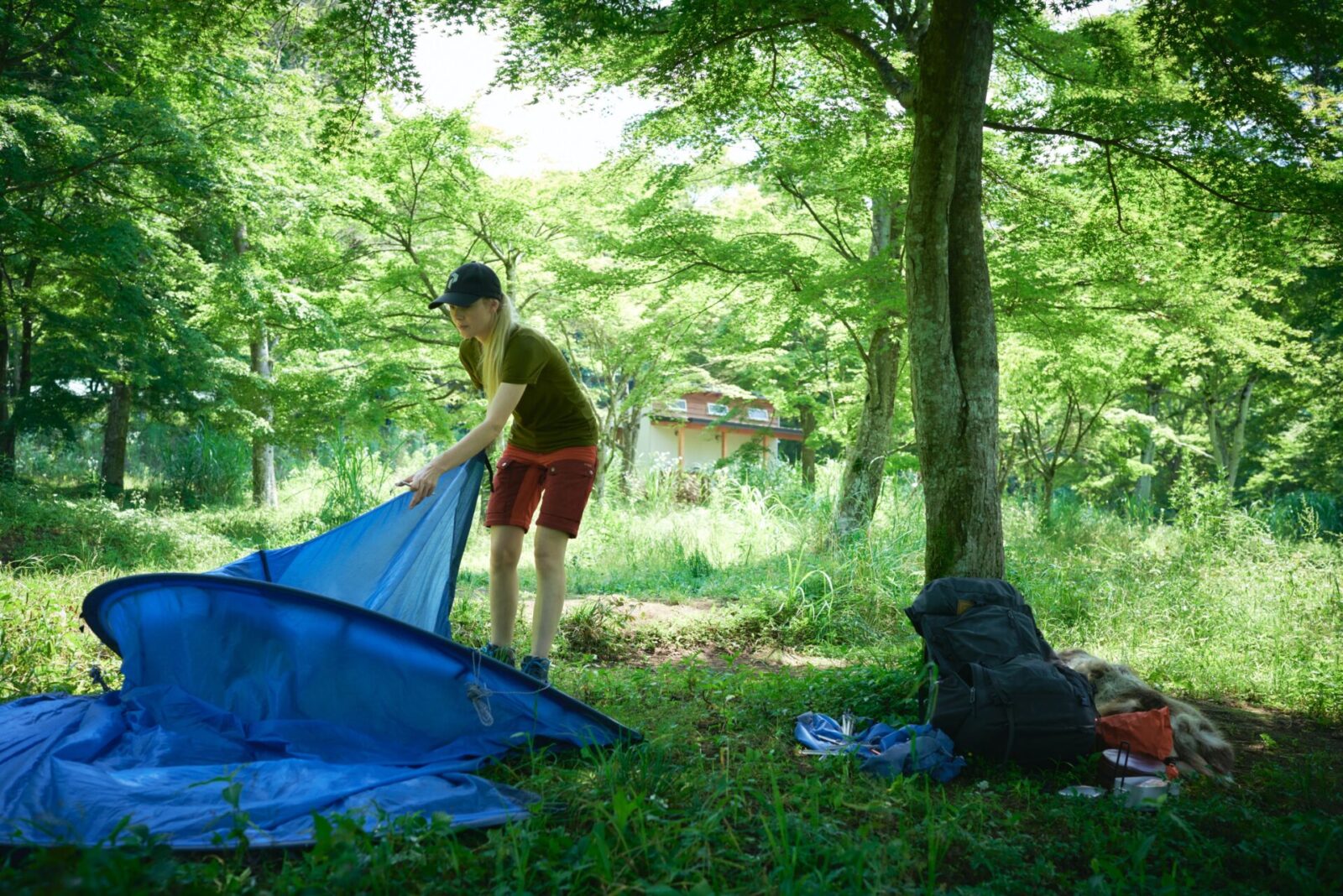
Once the tent was up, she laid a reindeer hide rug in front of the tent and continued to prepare for the outdoor fika.
She told us she will build a fire to make the coffee.
Most of Janni’s gear for enjoying outdoor fika are Lemmel products (Trangia products with the Lemmel logo). She usually builds an open fire but today we used a small fire pit to abide by the rules of the campground.
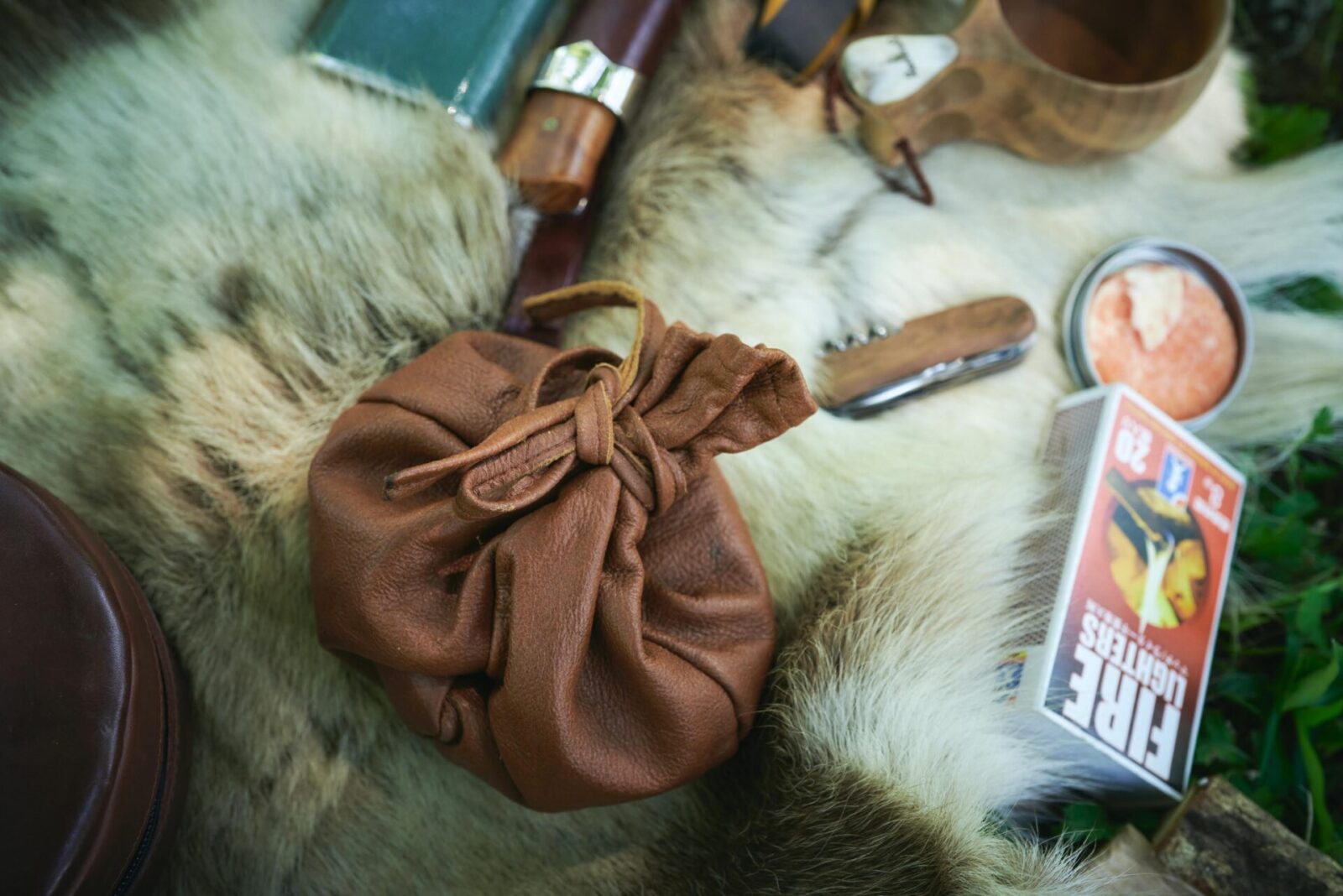
Inside the elk skin pouch are some coarsely ground coffee, and the birch mug Kuksa, which is a handmade mug made from hollowed out birch wood which is designed with a reindeer horn on top of the handle. Both these products are also from the Swedish brand Lemmel.
With well practiced movement, Yanni starts building the fire.
She places pieces of dried wood on the fire pit and slides a knife over the igniter to create a spark.
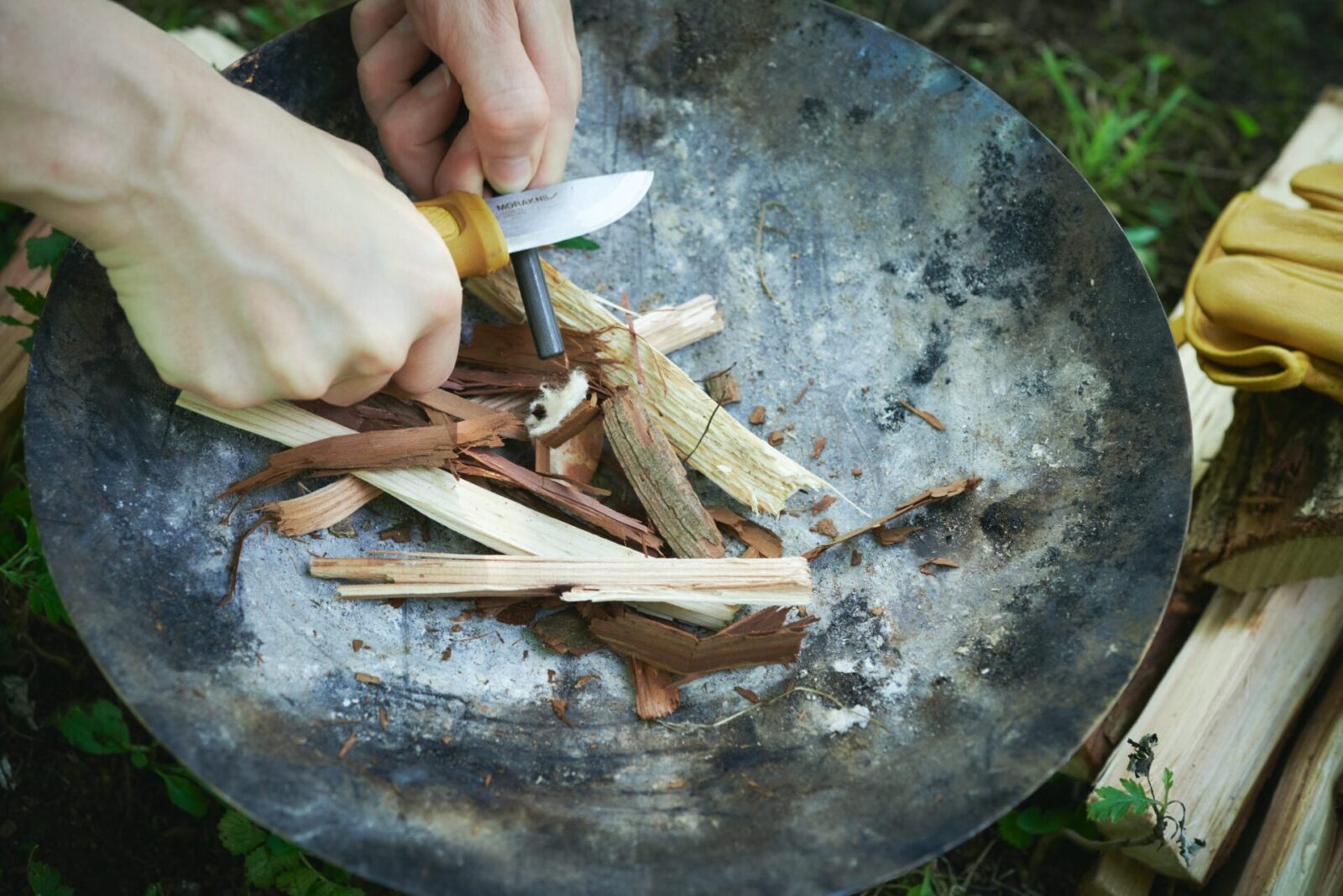
Once a small flame is ignited, she places more firewood on top and it soon grows into a steady fire. Next, she places the kettle on top of the fire to boil water.
The outside of the kettle is black from soot, showing that she uses it regularly.
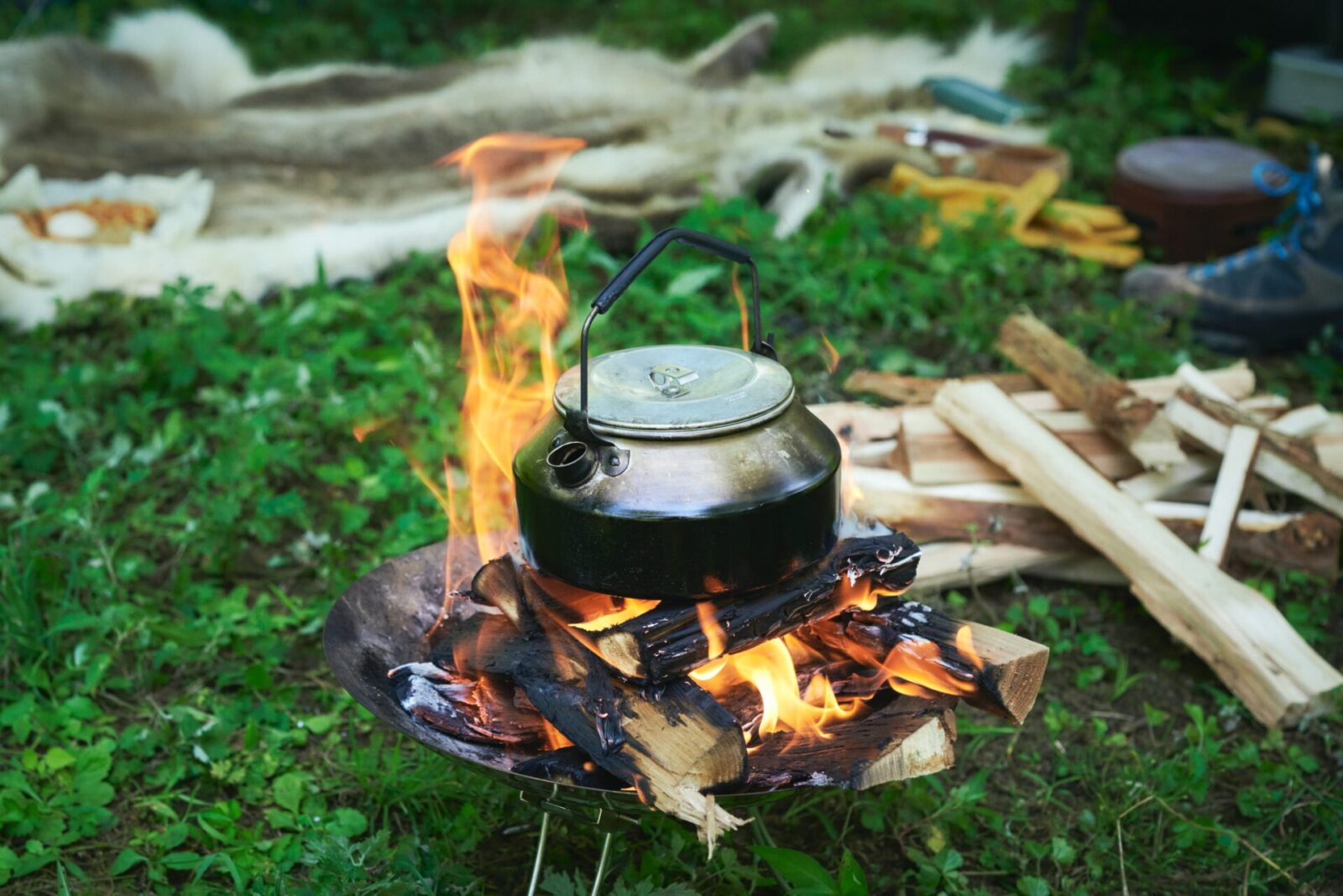
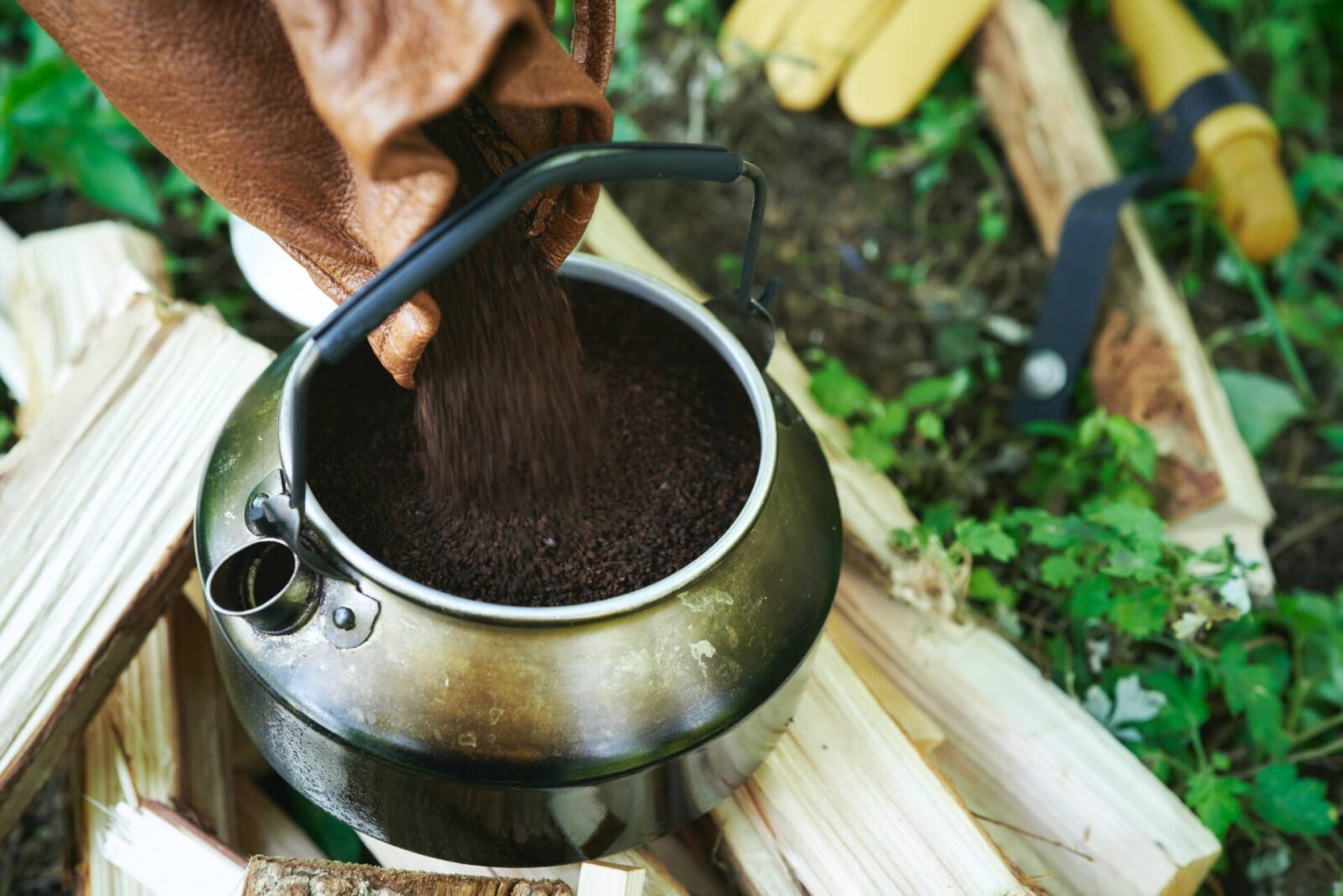
Once the water in the kettle starts to boil, a generous amount of coarsely ground coffee is added and the kettle is left to boil again.
When the coffee boils to the point where hot water is spewing out of the spout, the kettle is removed from the fire.
Then, we wait for about five minutes to give the coffee grounds time to sink to the bottom of the kettle.
When coffee is made on an open fire in Sweden the steps of making coffee are complete at this point, but Janni likes to boil the coffee two or three more times before serving it. She says it gives the coffee a deeper flavor.
Finally, Janni pours the coffee straight from the kennel into the kuksa mug that is placed on the ground.
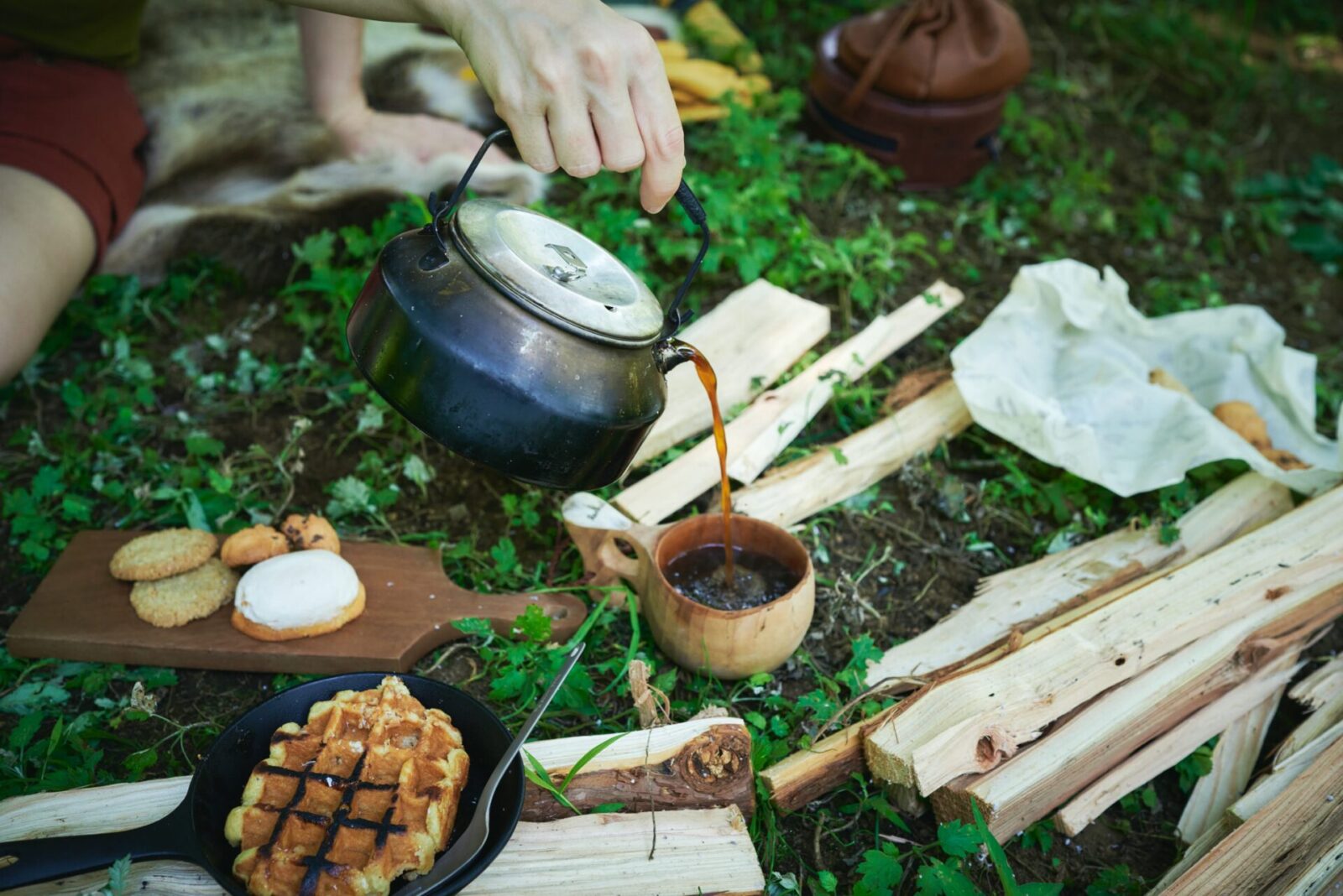
Janni takes a sip of the coffee and sighs as she says, “It tastes so good.”
We joined her around her fire and also enjoyed the twice boiled coffee. It was the first time we had coffee that has not been filtered.
At first, we thought that the coffee would be overly bitter and powdery because it was boiled and unfiltered, but we were surprised to find that it was smooth and easy to drink. It had a refreshing flavor and was very enjoyable.
Sweets are an essential part of the fika experience.
Janni says, “Because we have sweets, we usually don’t put sugar in the coffee.”
Janni provided us with Swedish oat cookies that had a natural sweetness to it and it went very well with the coffee.

Janni tells us that in Sweden they sometimes add salt to the coffee brewed on an open fire so we gave it a try. The salt mellows out the bitterness and makes the flavor more rich.
Perhaps it is because we are sweating from being outdoors and our body wants the salt, but the salty flavor provides a deep satisfaction in the body.
The early summer sun rays are strong and being close to the fire makes us sweat, but the occasional breeze that passes by feels like a treat from nature.
As we enjoyed our fika, we noticed how soon we were immersed in our surroundings, feeling the light coming through the trees, the chirping noises of insects and birds, the sound of the crackling fire, and the temperature and aroma of the coffee as our five senses were quietly awakened.
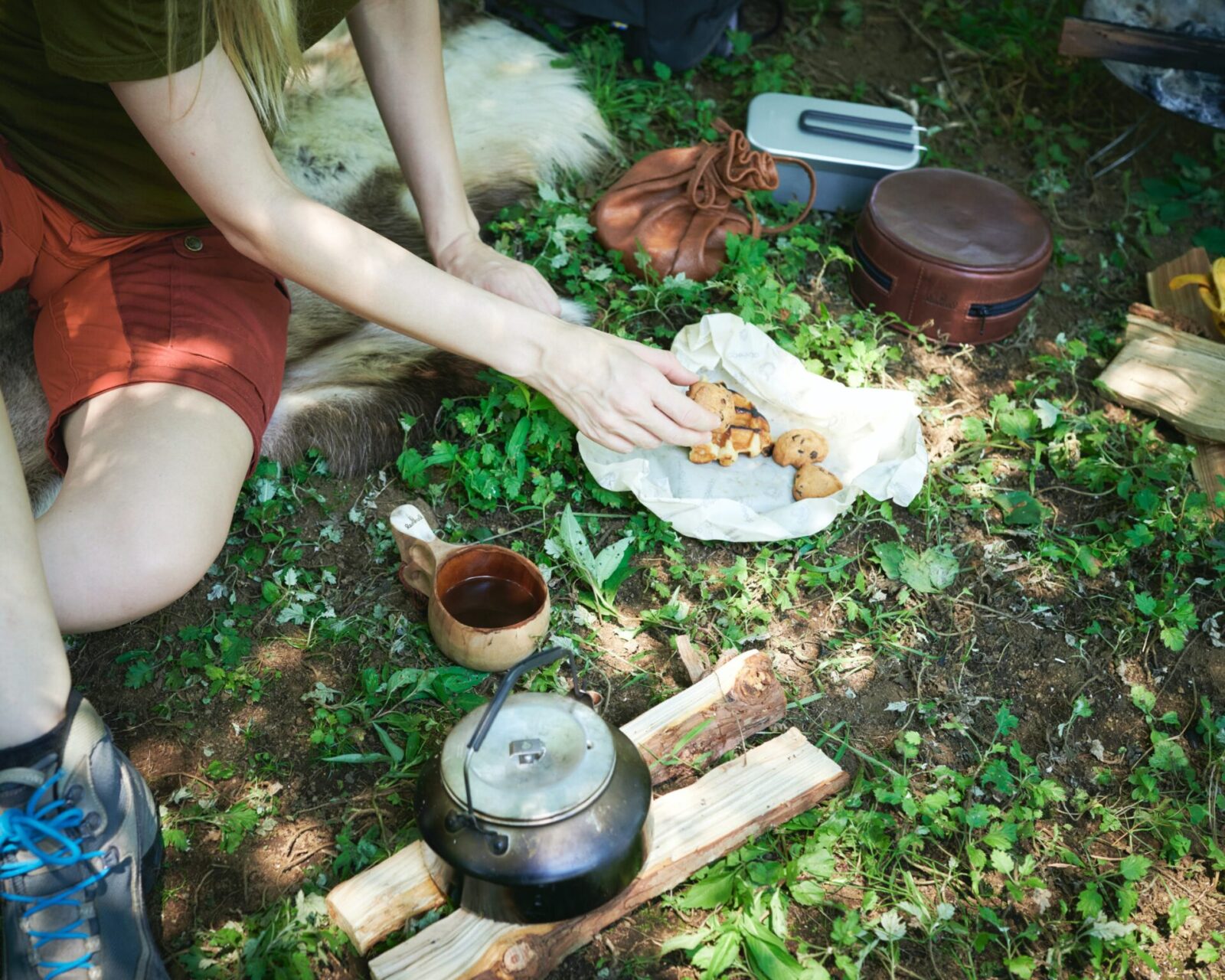
Although it was our first time meeting Janni, the time flowed by comfortably as we sat under the tree and enjoyed our conversation.
How to enjoy fika, the Swedish way
Once again we asked Janni what fika is.
“This is fika. It has been a part of my life since birth so it is difficult to explain in words. One thing I can say for certain is that the fun of fika is that it stimulates communication between people.”
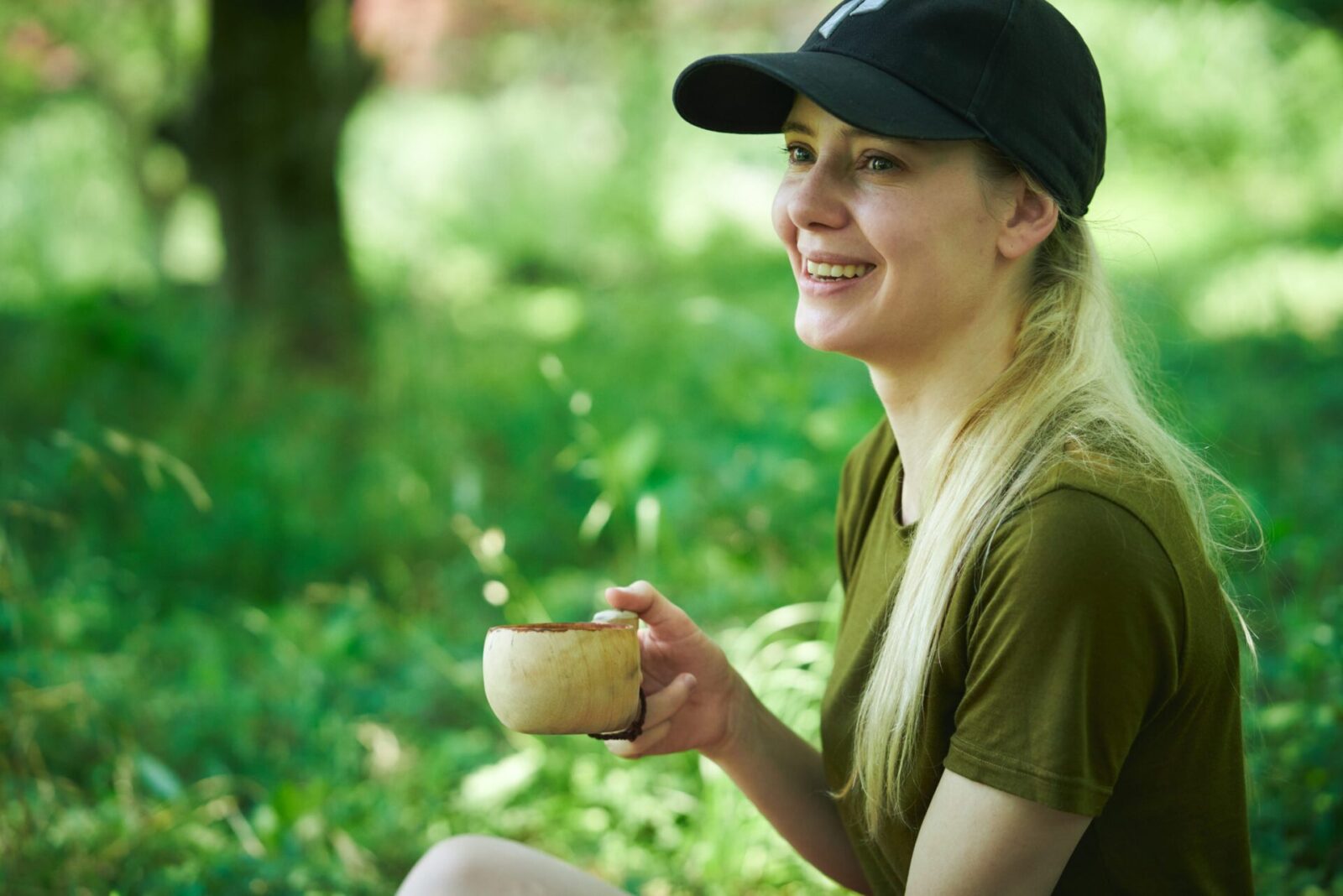
Although we experienced an outdoor fika, in Sweden, fika is enjoyed freely at home, in cafes or any preferred place. It is not uncommon for schools and workplaces in Sweden to have a time and space dedicated to fika.
Of course, fika is often enjoyed among people who are already close, but it is also a way to spend time with new acquaintances in order to get to know them better.
“I often invite people I want to become friends with, or have a keen interest in, to join me for fika. Asking someone out to dinner or a date can be a bit much, but fika is more casual and easy to do.”
Janni says that when she was a student, she would invite her new friends out for fika.
In other words, fika is similar to what we consider tea time in Japan.
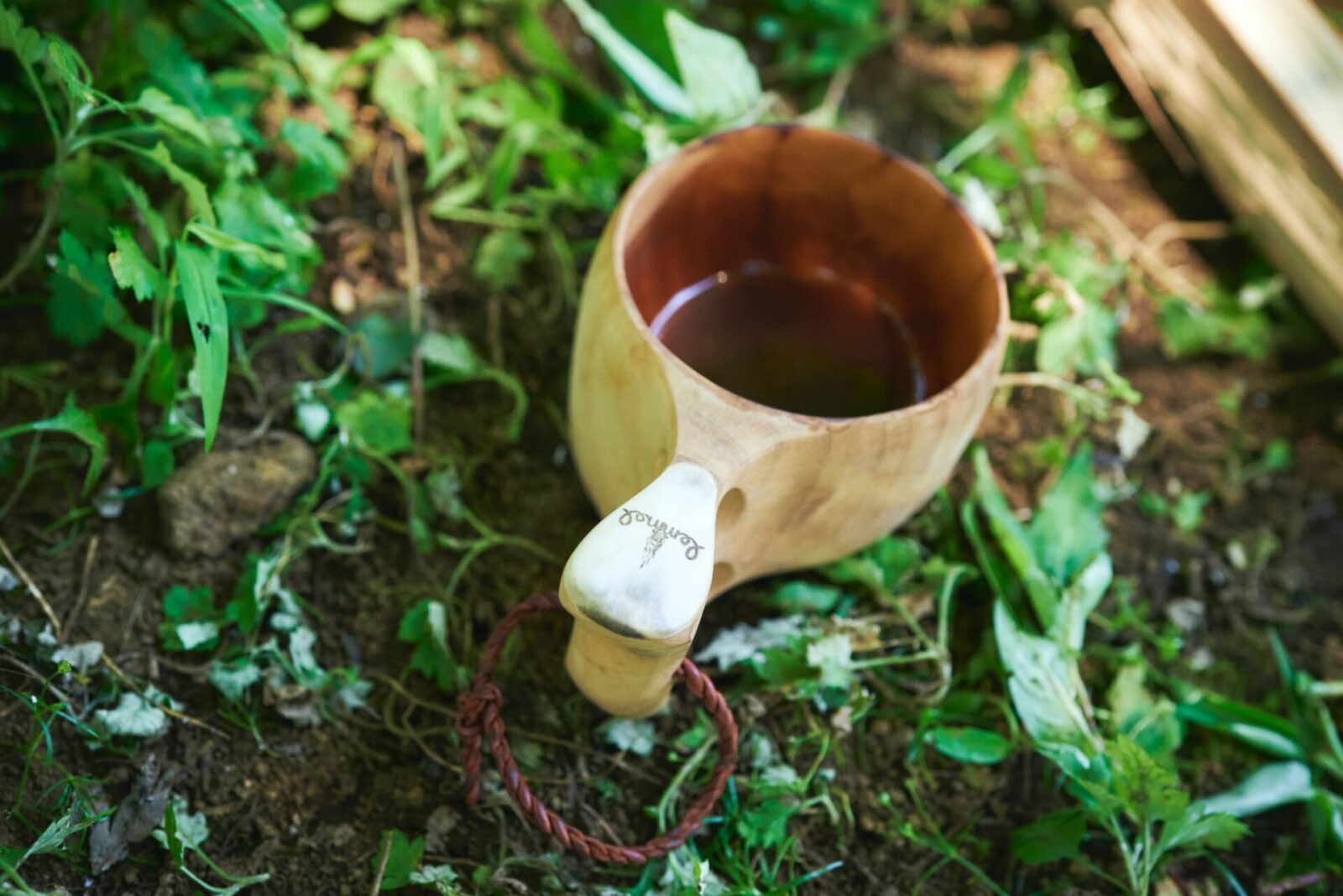
There are no rules when it comes to fika
The word fika is said to come from the Swedish word “kaffi,” which means coffee, spelled backwards into “fika.”
The tradition of fika is said to have started in the 1930s with the emergence of “kafferep.”
Back when women rarely worked outside the home, kafferep was a custom where women would get together in between housework to chat over a cup of coffee at each other’s homes. As women began entering the workforce, this custom evolved into fika, which was more open to all genders and could be casually enjoyed at any time of the day so the custom grew in popularity.
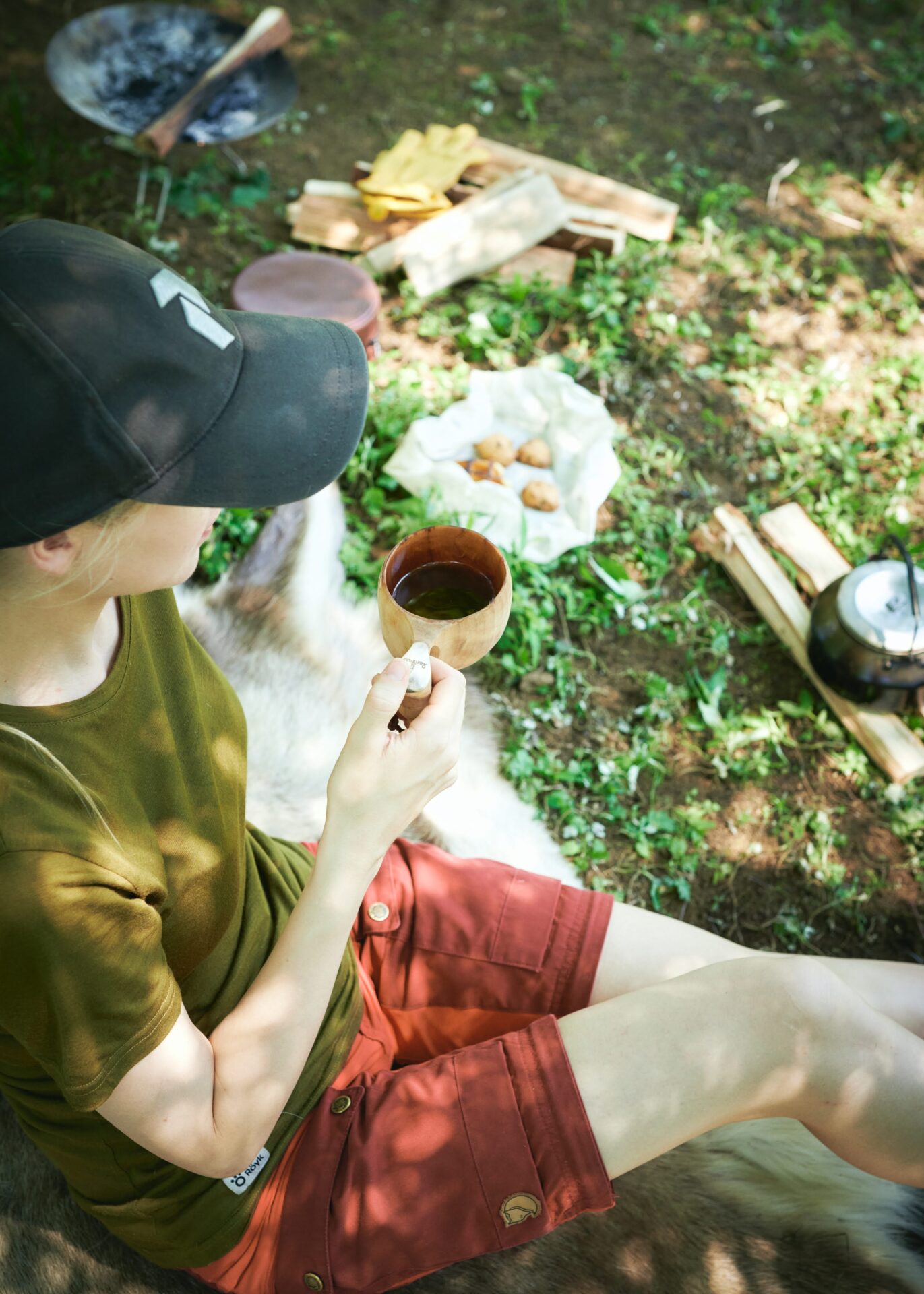
Fika is usually enjoyed with coffee and something sweet, but it is also sometimes paired with cheese or salmon as open sandwiches on bread.
It does not have to be paired with coffee and can be enjoyed with tea. During the Christmas season, fika is often paired with hot wine and gingerbread cookies.
Although there are some customary favorites, fika’s style is to combine whatever one wants to eat and drink.
Fika can also be enjoyed any time of the day. Sometimes it only lasts 15 minutes, and other times people get so caught up in conversation that it lasts for a couple hours.
“Basically, there are no rules when it comes to fika.”
Janni smiles as she deliciously takes another sip of coffee from her kuksa mug.
Solo fika, an experience akin to therapy
Fika has become an integral part of Swedish culture and a tool to enrich communication and human relationships.
At the same time, Janni says that “solo fika” helped her overcome hardships in her life.
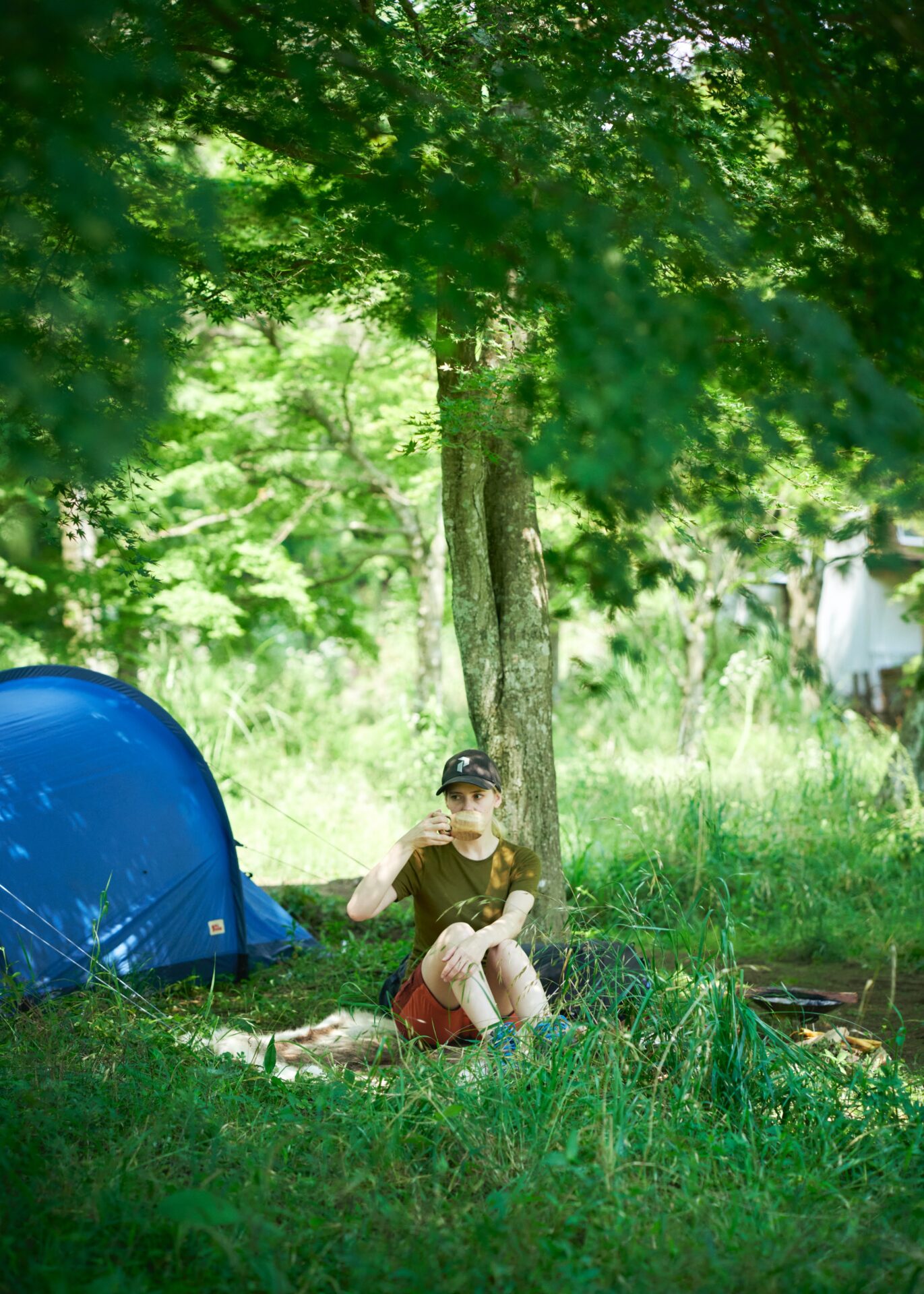
Just before turning 30, Janni was traveling back and forth between Japan and Sweden for study and work, and she suffered from burnout where she became both mentally and physically exhausted.
She also developed a panic disorder from the stress that came with dealing with a severe peanut allergy and got to the point where she was no longer eating.
It is hard to imagine such a past when you sit with her and see her cheerful smile in the present.
“Back then, I was trying to do too much at once. As a result my body and mind shut down so I decided to go back home to my parent’s house in Sweden and took a year off to rest.”
Naturally, her symptoms did not improve right away even after returning home.
Although she felt reluctant to do anything, she made an effort to go out as much as possible.
While being surrounded by the rich natural environment of her hometown, she desired to spend time alone, slowly and quietly.
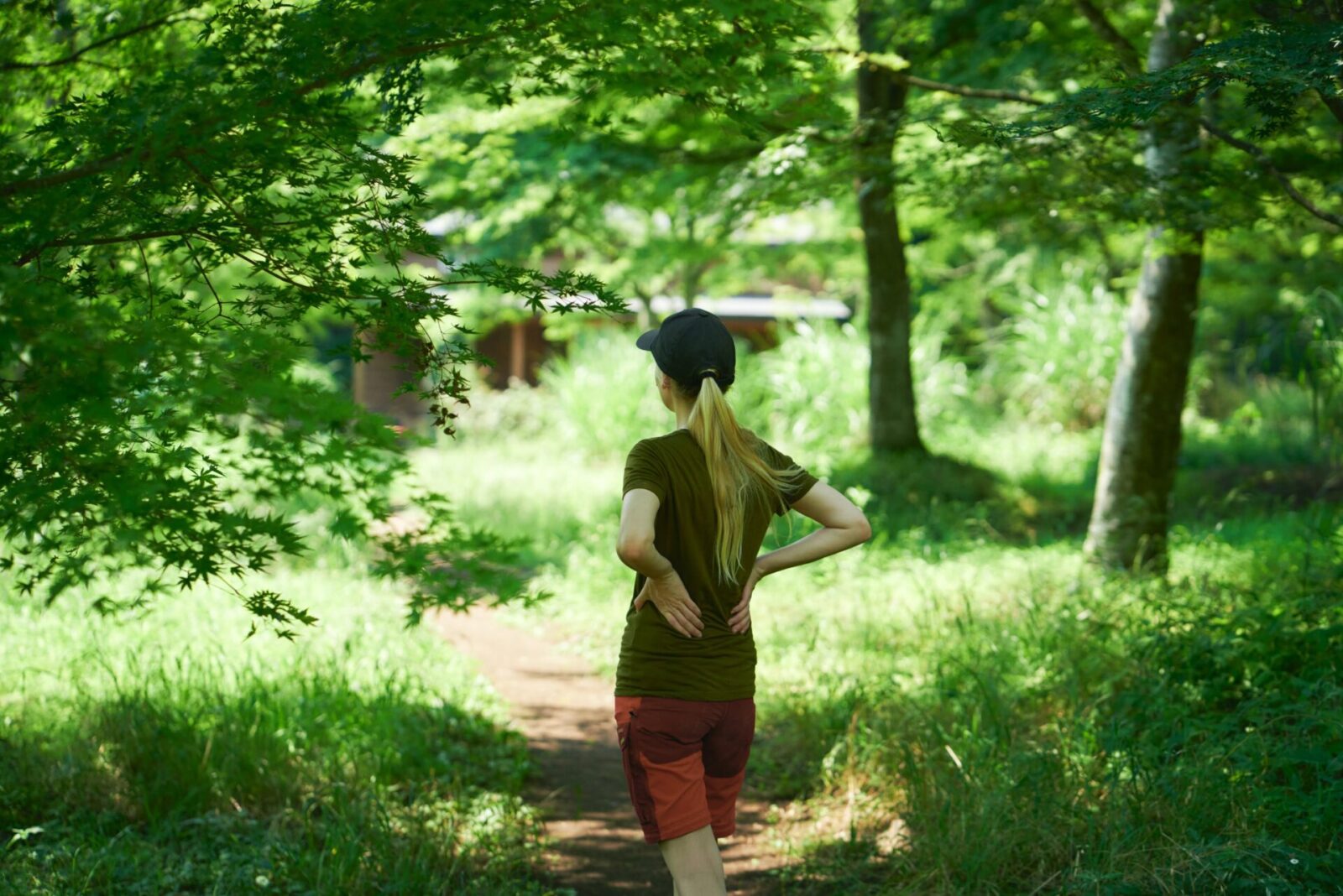
“After getting up in the morning and eating breakfast, I would make some herbal tea and put it in a thermos bottle. I would then put that and something sweet, like a cinnamon roll that my mother made, into my backpack and go out.”
“My destination was to go to one of my three favorite lakes for the day. I would walk or bike five to ten kilometers to my lake of choice, and once I was there I would enjoy solo fika in nature for a couple hours.”
Janni spent her days in this routine of enjoying fika in nature for as long as her heart desired.
Gradually, her mind and body started to find ease and she felt her body recuperate and gain back its strength. She was surprised to find that three months later, her panic disorder symptoms had subsided.
“I was able to eat food at my own pace and I felt better about choosing foods that I felt safe with.”
“I had become so scared of eating because of my severe food allergy, and eating with other people became a big burden for me, so spending time alone was important to me. My time spent in nature enjoying fika was very therapeutic.”
“Everyone experiences hardship at some point in their lives. For me, fika was one tool to overcome it.”
For modern people who lead busy lives, spending time like Janni’s solo fika, where we are allowed to do nothing, may be a necessity.
Let’s fill up our coffee bottles and head to the park
Janni travels all around Japan for work related to outdoor activities.
She has a busy schedule, but when she feels tired she takes time to relax her mind and body with outdoor fika.

The simplest method is to pack some coffee and something sweet and go to a nearby park or riverbed.
There is no need to complicate the experience by having to travel to a faraway mountain or campground. All you have to do is find a method that works for you that is enjoyable.
“Many people think of outdoor activities as time consuming and costly, but that is because there is a misconception that it requires a lot of gear. In reality, all you need is to take a thermos filled with coffee and go to a nearby park. When I started out, all I carried with me was my thermos.”

Janni chooses her gear based on functionality and how compact it is. She also looks for products that are made from natural materials such as leather and wood.
“I only carry gear that fits in my bicycle bag if I am traveling by bicycle, or in my backpack if I am hiking or climbing. 95 percent of the things in my bag are absolute necessities. The remaining 5 percent are not essentials, but things that make me feel good. My fika gear is exactly that.”
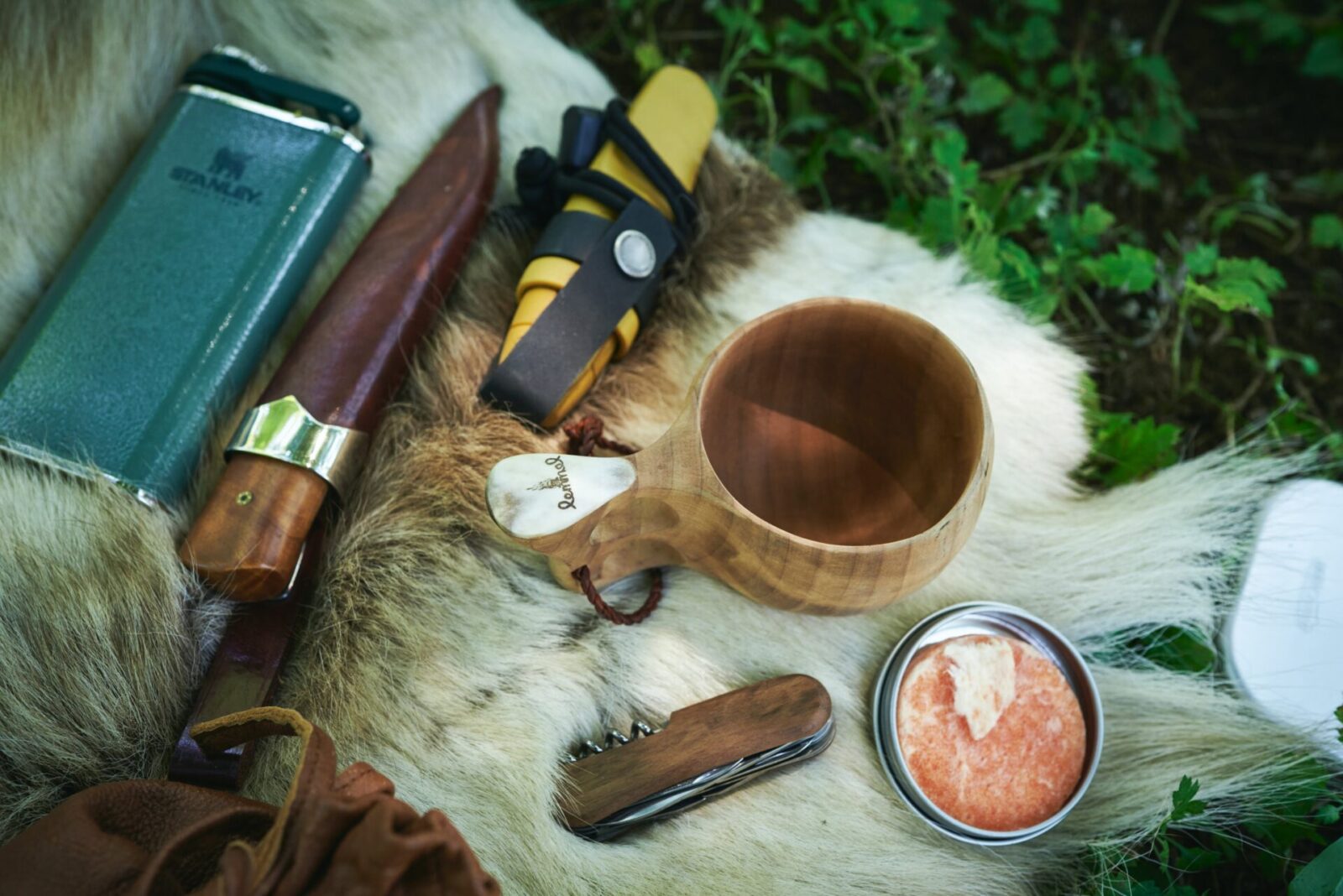
Finding your reset button
Once again, we drank coffee and listened to our surroundings.
The wind is blowing, and the branches and trees are rustling.
A bird chirps nearby and we wonder which tree it is in.
Before we know it, our body is relaxed.
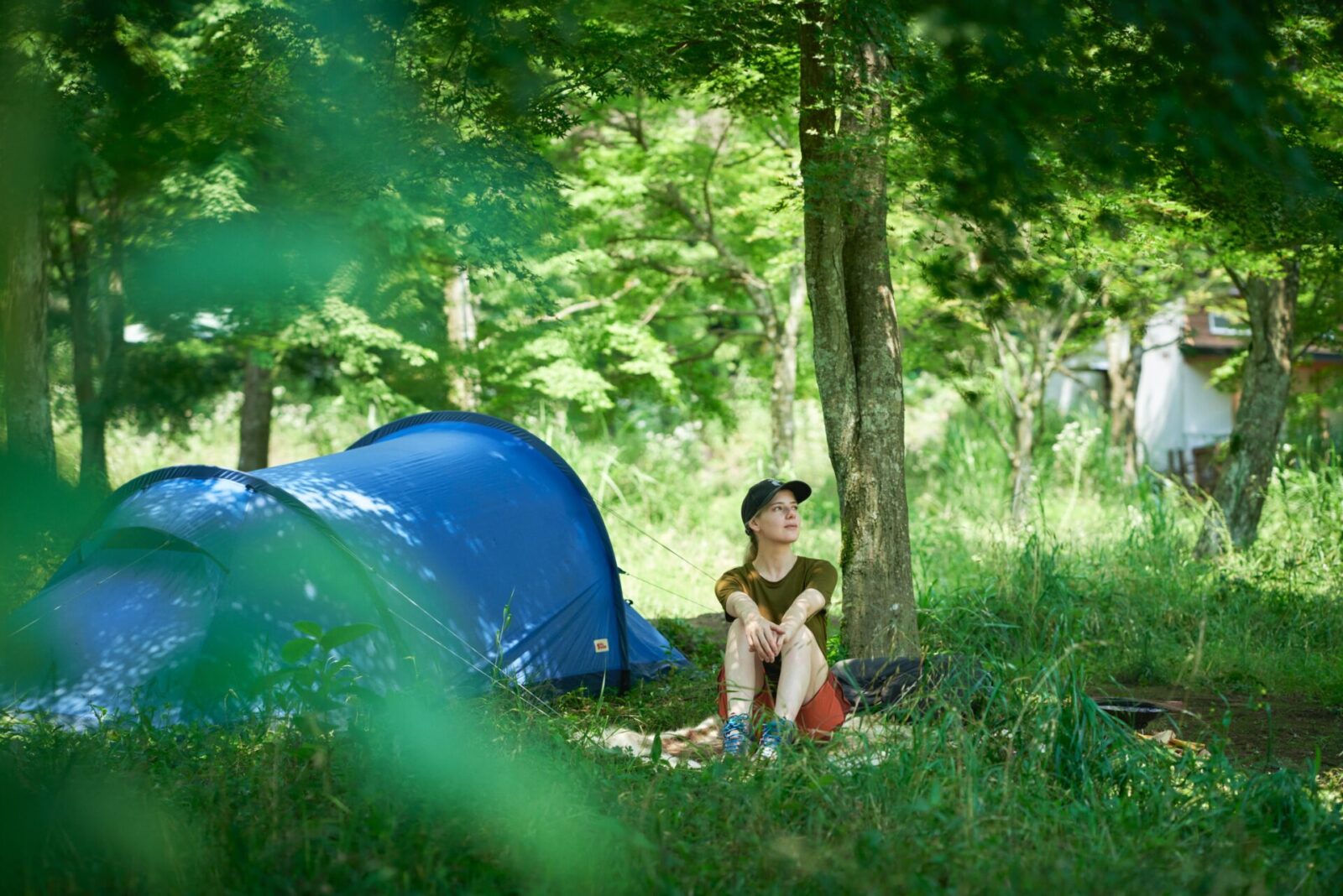
Lastly, we asked Janni what makes outdoor fika so appealing.
She answered, “It allows you to reset.”
“For me, when I am in a place like Tokyo that is overflowing with people and information, my mind gets distracted by so many thoughts and it gets too loud. However, when I come into nature for outdoor fika, I can turn my mind off and focus on my true self and the people I am with at the moment.”
“By separating myself from society for a moment, I can look at things objectively so even if I am stressing over a problem, I can see that it is not really a big deal.”
Janni laughs as she says, “Above all, when I am in nature I become like an innocent and excited child. I think that is true for everyone, don’t you?”
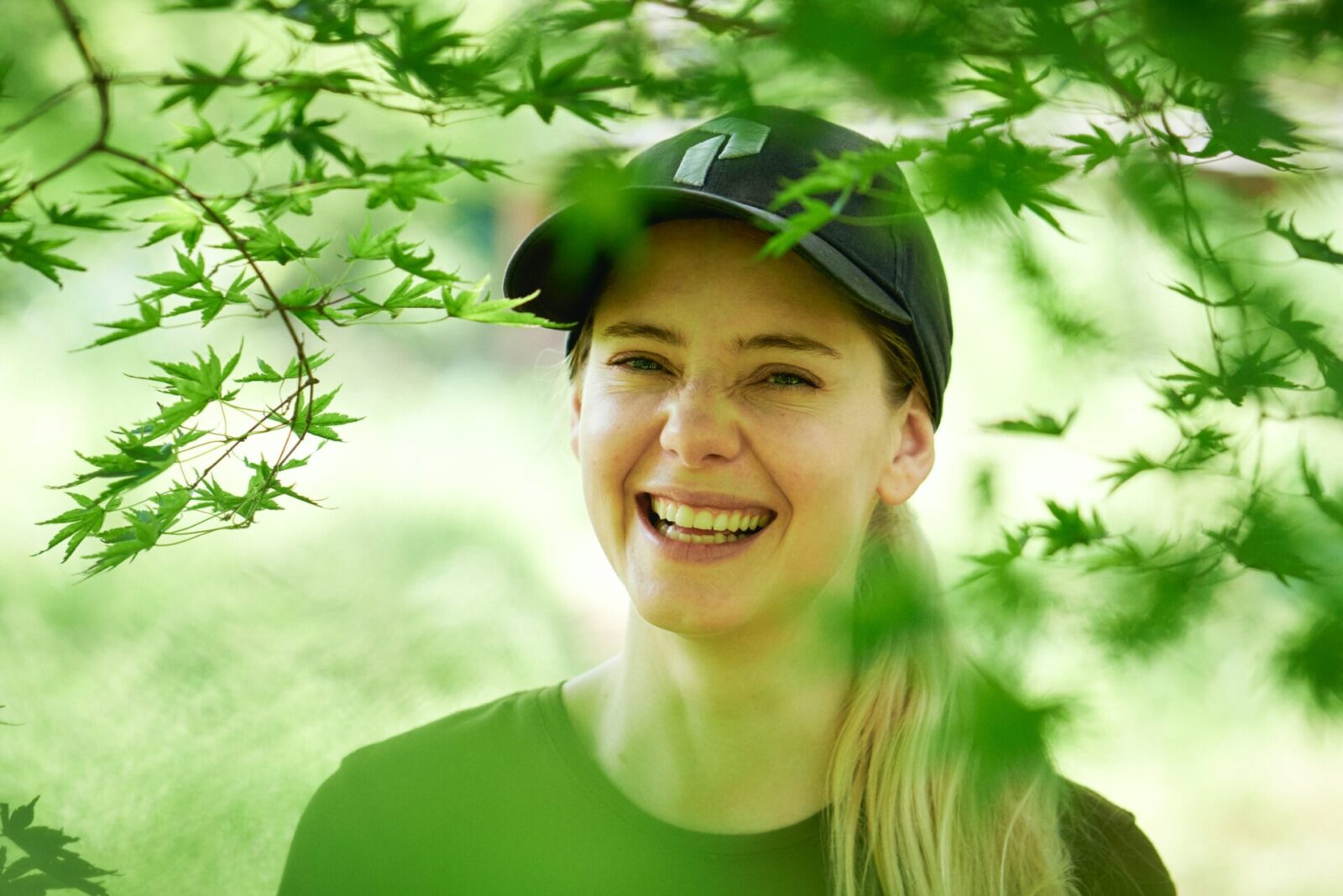
Janni’s well being seems to come in part from her practice of fika.
Fika can be enjoyed alone, or with other people. It can be enjoyed at home, or outdoors.
What is important for fika is how you spend your time in the moment. If you can incorporate fika in your everyday life, perhaps you will find hints on how to take better care of yourself and bring color into your life.
Photo:Umihiko Eto
Translation:Sophia Swanson
Thanks:ANOTHAPLACE
Lives in Tokyo, Japan. Became independent after working as an editor for online media sites “MYLOHAS” and “greenz.jp” and magazine “sotokoto”. Edits and writes for magazines, online media, books, and other media outlets, as well as corporate websites, on themes such as sustainable manufacturing, community development, and working styles. Also acts as director and buyer for the online store and media “ichijitu” which offers everyday products and tools that assist in everyday life.
Editor. Born and raised in Kagoshima, the birthplace of Japanese tea. Worked for Impress, Inc. and Huffington Post Japan and has been involved in the launch and management of media after becoming independent. Does editing, writing, and content planning/production.
